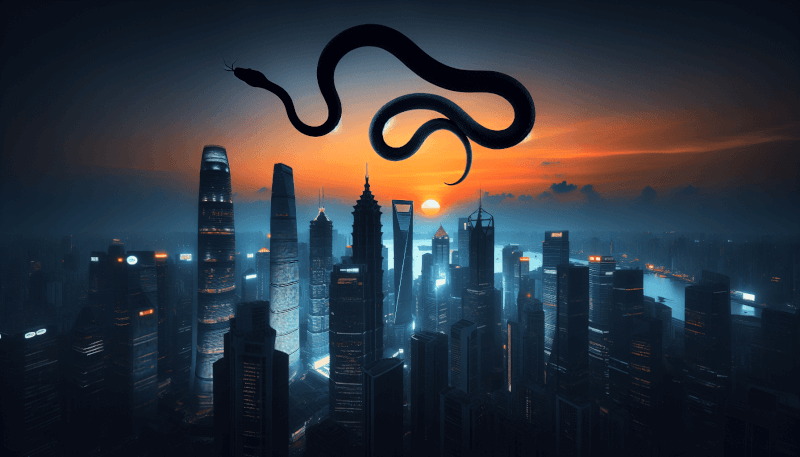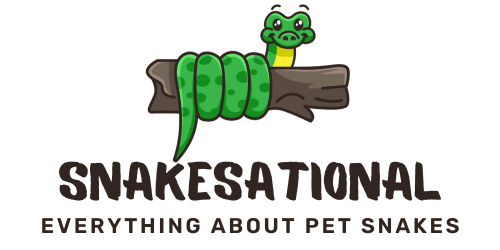Imagine strolling through the vibrant streets of Washington, D.C., enjoying the iconic monuments and cherry blossoms. Now, picture unexpectedly crossing paths with an unexpected resident of the city – snakes. Yes, you read that right, snakes in the nation’s capital. While it may seem like an unlikely scenario, recent sightings have sparked curiosity and concern among residents. In this article, we will explore the presence of these slithering creatures in D.C., their potential origins, and whether there is cause for alarm. So fasten your seatbelt and get ready to uncover the surprising reptilian underworld of the District.
Introduction
Welcome to the fascinating world of snakes in Washington, DC! While some may view these slithering creatures with fear or apprehension, snakes play an important role in our ecosystem and are worthy of our understanding and respect. In this comprehensive article, we will explore the types of snakes found in the DC area, their habitats and behaviors, snakebite prevention and safety precautions, snake removal and control methods, controversies surrounding snakes, encounters in parks and residential areas, educational opportunities and resources, legal regulations, and the future outlook and research on snakes in the nation’s capital.
Types of Snakes Found in DC
Native Snake Species
Washington, DC is home to a variety of native snake species, each with its own unique features and characteristics. Some of the common native species include the Eastern Rat Snake, Northern Copperhead, Eastern Milk Snake, and Black Rat Snake. These snakes are well-adapted to the local environment and play vital roles in controlling rodent populations and maintaining the delicate balance of the ecosystem.
Non-Native Snake Species
Apart from the native snake species, there are also non-native snake species that have been introduced to the DC area. These include the Northern Water Snake, which is commonly mistaken for the venomous Water Moccasin, and the Eastern Garter Snake. While these non-native snakes pose no significant threat to the local ecosystem, it is important to recognize and differentiate them from the native species to avoid unnecessary panic or misunderstanding.

Habitat and Behavior of Snakes in DC
Preferred Habitats
Snakes in DC can be found in a variety of habitats, ranging from forests and grasslands to wetlands and urban areas. They are most commonly found near bodies of water, such as streams, rivers, and ponds, as well as in wooded areas with ample vegetation. Snakes often seek out shelter in rock crevices, fallen logs, and brush piles, where they can find protection from predators and extreme weather conditions.
Feeding Habits
Snakes are carnivorous creatures, and their feeding habits vary depending on their species and size. Most snakes in DC primarily feed on rodents, such as mice and rats, which helps to keep the rodent population in check. Larger snake species may also consume birds, frogs, and even small mammals. Snakes are extremely efficient predators, using their keen senses and specialized fangs to immobilize and swallow their prey whole.
Reproduction and Life Cycle
Snakes reproduce through a process called sexual reproduction. Female snakes lay eggs or give live birth, depending on the species. After mating, female snakes may lay eggs in hidden locations, such as underground burrows or decaying vegetation, where the eggs are protected from predators and temperature fluctuations. The eggs hatch, giving rise to baby snakes that are independent and ready to explore their surroundings. Snakes grow through a process called shedding or molting, where they shed their old skin to accommodate their growth.
Interaction with Humans
Snakes typically avoid human interaction and prefer to retreat when confronted. However, encounters between humans and snakes can occur in parks, residential areas, or other natural habitats. It is important to remember that snakes in DC are generally non-aggressive and will only bite if they feel threatened or cornered. Most snake bites in the area occur when people attempt to handle or disturb the snakes. Therefore, it is crucial to practice caution and respect when encountering snakes in their natural environment.
Snakebite Prevention and Safety Precautions
Identifying Venomous Snakes
It is essential to be able to identify venomous snakes found in the DC area to ensure personal safety. While the chances of encountering a venomous snake are relatively low, it is still wise to familiarize yourself with their distinguishing features. The Northern Copperhead is the only venomous snake species commonly found in DC. Its distinctive triangular-shaped head, heat-sensing pits between the eyes and nostrils, and hourglass-shaped markings on its body are key characteristics to look for when trying to identify this venomous snake.
Avoiding Snake Habitats
Prevention is key when it comes to avoiding snake encounters and potential snakebites. Snakes are commonly found in areas with tall grass, dense vegetation, or rocky outcrops. To minimize the risk of coming across a snake, it is advisable to stay on designated pathways, avoid climbing rocks or tree stumps without proper visibility, and keep lawns well-maintained. Additionally, it is important to be cautious when exploring wooded areas or approaching bodies of water, as these are popular snake habitats.
Proper Footwear and Clothing
Wearing appropriate footwear and clothing can provide an extra layer of protection against snakebites. When venturing into snake-inhabited areas, it is recommended to wear closed-toe shoes or boots that cover the entire foot and ankle. Long pants made of thick fabric can act as a barrier against potential snakebites. Additionally, avoiding bright-colored clothing and opting for earth-toned or neutral colors can make it less likely for snakes to mistake humans for prey.
Using Protective Measures
For those who work in fields or areas where snake encounters are more likely, additional protective measures can be taken. Snake gaiters, which are specialized protective coverings for the lower legs, can provide added protection against snakebites. When working with heavy tools or equipment, wearing gloves can prevent accidental snake bites. Utilizing snake hooks or tongs can also help to safely relocate snakes without causing harm to the snake or the handler.
What to Do in Case of a Snakebite
In the unlikely event of a snakebite, it is crucial to remain calm and seek immediate medical attention. It is important to remember that not all snakebites are venomous. However, it is best to treat all snakebites as potentially venomous, as the nature of the bite cannot be determined without medical expertise. While waiting for medical assistance, it is advisable to keep the affected limb immobilized, below heart level, and avoid applying any substances to the wound, such as ice, tourniquets, or suction devices.

Snake Removal and Control in DC
Professional Snake Removal Services
If you encounter a snake in your home, yard, or any other area where its presence may pose a risk or cause concern, it is advisable to contact a professional snake removal service. These services have the expertise and experience to safely and humanely remove the snake without causing harm to the snake or residents. Professional snake removal services will also be able to provide guidance on preventive measures to minimize the likelihood of future snake encounters.
Snake Prevention Techniques
Preventing snakes from entering your property or home can help minimize potential conflicts. Simple measures can be taken, such as sealing cracks and crevices in foundations, repairing gaps in fences or walls, and keeping the surrounding area free of debris and overgrown vegetation. Removing possible food sources, such as bird feeders or stored pet food, can discourage snakes from entering residential areas.
Safe Handling and Relocation
In certain situations, where the presence of a snake poses no immediate threat and relocation is deemed necessary, it is important to handle the snake safely. It is crucial to refrain from attempting snake removal or handling if you do not have the proper knowledge or experience. If relocation is necessary, contacting a professional snake handler or wildlife expert is recommended. These individuals have the necessary training to safely capture, handle, and relocate snakes to suitable habitats.
Controversies and Public Perception of Snakes in DC
Misconceptions and Fear
Snakes often face misconceptions and fear from the general public, driven by cultural myths and negative portrayals in media. While it is important to exercise caution when encountering snakes, it is equally essential to understand their critical role in maintaining the delicate balance of the ecosystem. Dispelling misconceptions and promoting education about snakes can help foster a more positive perception and appreciation for these fascinating creatures.
Role in Ecosystem
Snakes play a vital role in the DC ecosystem by controlling rodent populations that can cause damage to crops, spread diseases, and disrupt natural habitats. By keeping rodent numbers in check, snakes indirectly contribute to human health and well-being. Additionally, snakes are an integral part of the food chain, providing sustenance for predators such as birds of prey and mammals. Understanding and valuing the ecological importance of snakes can help foster greater coexistence with these misunderstood reptiles.
Advocacy and Conservation Efforts
Various organizations and individuals in the DC area are actively engaged in advocacy and conservation efforts to protect snakes and their habitats. These initiatives focus on educating the public about the ecological significance of snakes, dispelling myths, and promoting conservation measures that benefit snakes and their ecosystems. By supporting these efforts and spreading awareness, we can contribute to the conservation and preservation of our valuable snake populations.
Encounters with Snakes in Parks and Residential Areas
Common Sightings
Encounters with snakes in parks and residential areas are not uncommon in DC. Snakes can be found basking in the sun on rocks or logs, crossing pathways, or seeking shelter in areas with ample vegetation. Common sightings include the Northern Water Snake, Eastern Garter Snake, and various harmless species of snakes. These encounters provide opportunities to observe and appreciate the beauty and natural behaviors of these captivating creatures.
Do’s and Don’ts
When encountering a snake in a park or residential area, it is important to remain calm and give the snake space. Do not attempt to handle or disturb the snake, as this may provoke defensive behavior. Keep a safe distance and observe the snake from afar, appreciating its role in the ecosystem. It is also crucial to refrain from harming or killing snakes, as they play an important ecological role and are protected by law in many areas.
Reporting Snake Sightings
If you encounter a snake in a park or residential area and feel the need to report it, there are resources available to provide valuable information. Local wildlife agencies, park authorities, or herpetology organizations may have programs in place to catalog snake sightings for research and conservation purposes. By reporting your snake sighting, you contribute to the collective understanding of snake populations in the DC area and help strengthen conservation efforts.
Educational Opportunities and Resources
Public Education Programs
Numerous educational programs are available in the DC area that focus on snakes and reptiles. These programs may be conducted by local nature centers, zoos, or wildlife organizations and aim to provide hands-on experiences, interactive presentations, and informative exhibits. Through these programs, participants can learn about snake identification, their ecological importance, and the significance of coexistence with these remarkable creatures.
Online Resources and Identification Guides
For those interested in learning more about snakes in DC, there are abundant online resources and identification guides available. These resources often provide detailed information on the native and non-native snake species found in the area, including their physical characteristics, habitats, and behaviors. Online forums and communities also offer opportunities to engage with snake enthusiasts, ask questions, and share observations.
Snake Awareness Events and Workshops
Snake awareness events and workshops are periodically organized in the DC area to promote understanding and appreciation for snakes. These events often feature presentations by snake experts, live snake encounters, and guided nature walks. Attending these events provides a unique opportunity to interact with knowledgeable individuals and gain firsthand experience in observing and appreciating snakes in their natural habitats.
Legal Regulations and Exotic Snake Trade
Applicable Laws and Regulations
The trade and ownership of snakes, particularly exotic species, are regulated by various laws and regulations in the DC area. These regulations aim to prevent the introduction of non-native snakes, which can have severe ecological impacts, as well as protect native snake species from exploitation and harm. It is important to familiarize yourself with the specific laws and regulations governing snake ownership and trade to ensure compliance and support conservation efforts.
Impact of Exotic Snake Trade
The exotic snake trade, characterized by the importation and sale of non-native snake species, poses significant risks to ecosystems. Releasing non-native snakes into the wild can have devastating consequences, as they may outcompete or prey upon native species, disrupt the natural food chain, and spread diseases. The impact of the exotic snake trade underscores the importance of responsible pet ownership, raising awareness about the potential ecological impacts, and supporting legislation to combat the illegal trade.
Steps to Combat Illegal Trade
Efforts to combat the illegal trade of exotic snakes involve a collaborative approach among law enforcement agencies, wildlife organizations, and concerned citizens. Increased surveillance and monitoring of pet stores, online marketplaces, and exotic animal breeding facilities can help identify and address illegal trade activities. Enhanced penalties for violating regulations and increased public awareness of the dangers associated with the exotic snake trade are crucial in deterring and preventing the trafficking of non-native snake species.
Future Outlook and Research
Monitoring Snake Populations
Monitoring snake populations in the DC area is vital to understand population trends, gauge the health of ecosystems, and identify any potential threats or conservation needs. Ongoing research projects and citizen science initiatives play a crucial role in collecting data on snake populations and their habitats. By actively participating in these programs, individuals can contribute to the conservation and management efforts aimed at ensuring the long-term viability of snake populations in the region.
Climate Change Impact
As our climate continues to change, it is essential to consider the potential impact on snake populations in the DC area. Alterations in temperature, precipitation patterns, and habitat availability can affect snakes directly or indirectly by influencing their prey availability and reproductive cycles. Research focused on understanding the adaptability and resilience of snakes in the face of climate change is vital for informed conservation and management decisions.
Conservation Steps
Conservation efforts aimed at preserving snake populations in the DC area involve a combination of habitat protection, public education, and policy initiatives. The preservation of natural habitats, including wetlands and woodlands, is crucial for maintaining suitable snake environments. Education campaigns and outreach programs can raise awareness about the importance of snakes and promote responsible environmental practices. Furthermore, collaborations between scientists, government agencies, and conservation organizations can strengthen efforts to protect and conserve the diverse snake species in the region.
In conclusion, the world of snakes in Washington, DC is rich with diversity and ecological significance. By understanding their habitats, behaviors, and the steps we can take to coexist with them, we can foster a safer and more harmonious relationship with these intriguing creatures. Through education, conservation efforts, and responsible actions, we can ensure the preservation of snake populations and the delicate balance of the ecosystem in our nation’s capital. So let’s embrace this opportunity to appreciate and protect the snakes in DC, who play an invaluable role in the natural world.


